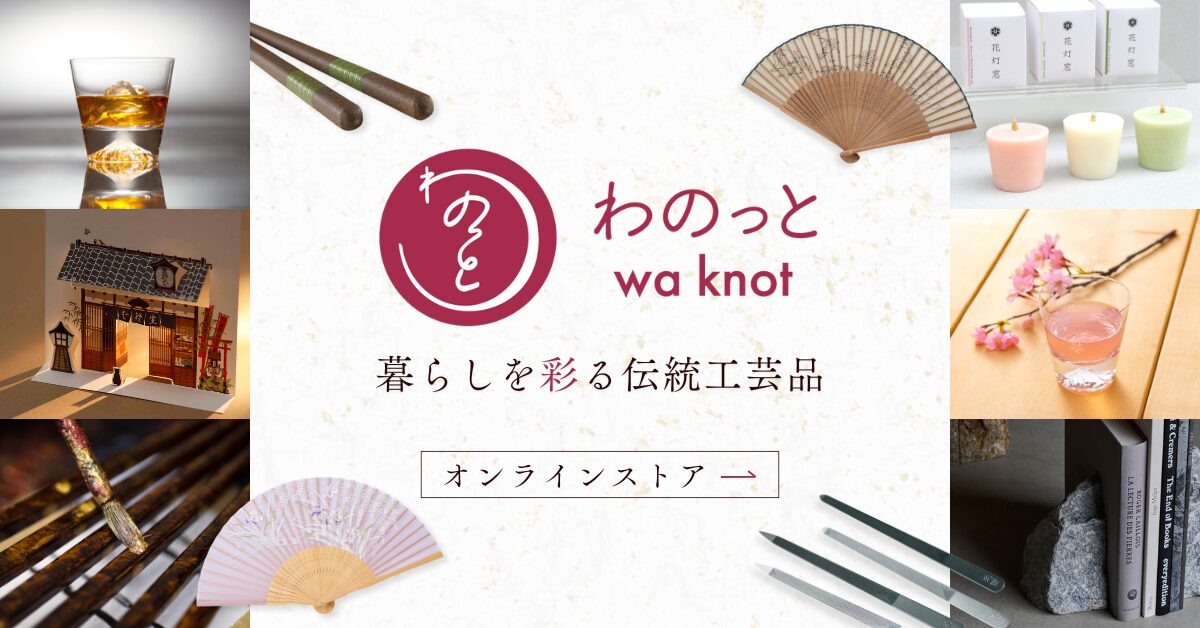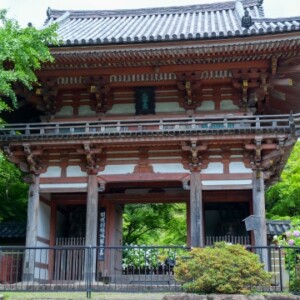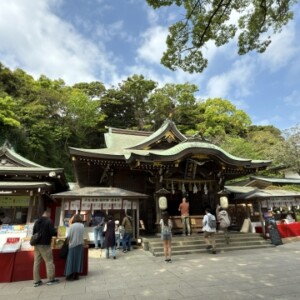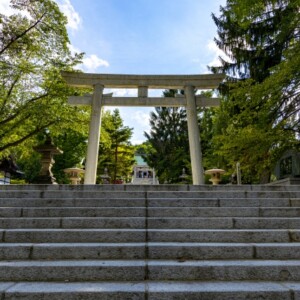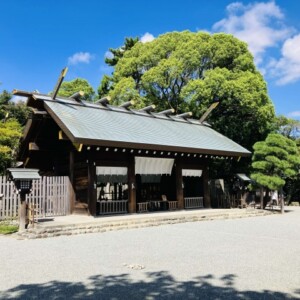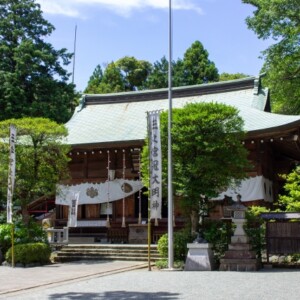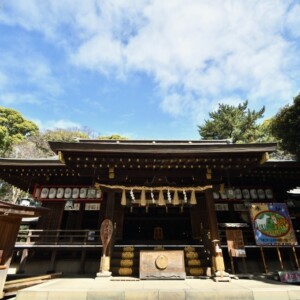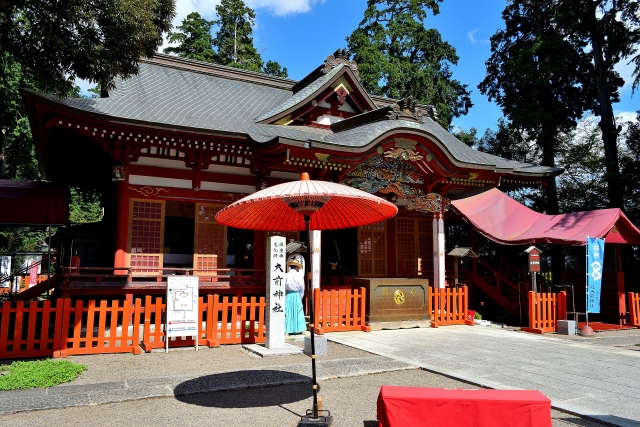
Omae Shrine and Omae Ebisu Shrine|Complete guide to Engi-Shiki-Uchi Shrines with the most attractive Ebisu-sama and extremely colorful shrine pavilions in Japan
Omae Shrine, located in a lush forest in Moka City, Tochigi Prefecture, is a Engi-style shrine with a history of more than 1,500 years and continues to be loved by many worshippers. Within the shrine grounds sits the largest Ebisu-sama in Japan, standing 20 meters tall, and is a special sanctuary visited by people from all over the country who wish to win the lottery and bring good fortune to their families.
Outline and basic information about Omae Shrine and Omae Ebisu Shrine
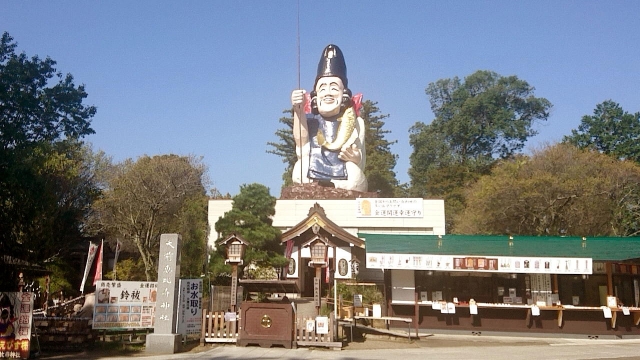
Omae Shrine is located in Moka City, Tochigi Prefecture, and has a history of more than 1,500 years. Omae Ebisu Shrine, located on the shrine grounds, is known as the Wakamiya Shrine of Omae Shrine, which was completed on December 10, 1989, when the shrine’s dedication ceremony was held, and the two shrines together are well known to many visitors.
History and Origin
The sacred site “Osaki,” where Engi-shikiuchi Omae Shrine is located, is said in an ancient oral inscription to be “a sacred place of the divine era. The origin of the name “omae” is believed to be the existence of “Haganuma” in the northern part of the area adjacent to the shrine grounds, and its location at the edge of the swamp is thought to have given rise to the name “omae (saki)” shrine.
The shrine has a long history, dating back to the Jingo-Keiun period (767-770), when it was rebuilt, and has a history of more than 1,500 years. In the Heian period (794-1185), it was enshrined as a branch temple of Kuroshi-Senmyo-ji Temple on Toeizan in Bando, Hitachinaka Province, and its headquarters was dedicated to Yakushi Nyorai (Medicine Buddha) in accordance with the syncretism of Shinto and Buddhism.
It is said that in 935, when Taira no Masakado was about to start the Jouhei Tenkei Rebellion, he prayed at Omae Shrine for victory in the battle and performed his prayers at the Gogyo River’s Mitarashi.
Deities and Benefits
The deities of Omae Shrine are “Daikoku-sama” (Okuninushi), the god of fortune, and his son “Ebisu-sama” (Kotoshironushi). The deities enshrined at Omae Shrine are Amaterasu (Amaterasu Omikami) and the eight million gods.
Ebisu-sama is the son of Daikoku-sama, the main deity of Omae Shrine, and the father and son built the foundation of industrial development together. The term “two gods of fortune” is often used to refer to Okuni-sama and Ebisu-sama.
These deities are said to bring a wide range of blessings, including health, marriage, prosperous business, family safety, good fortune, and healing of illness.
Omae Shrine and Omae Ebisu Shrine Highlights and Features
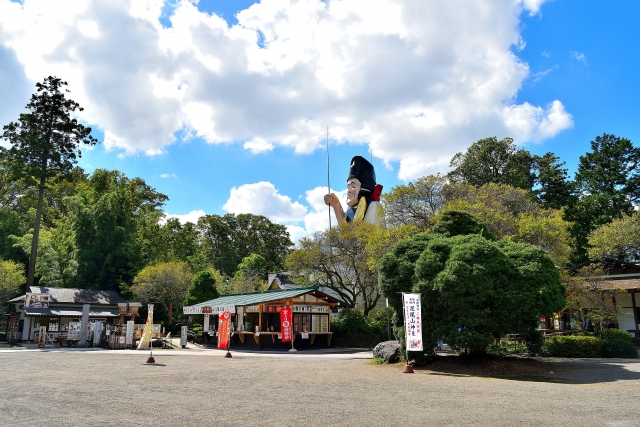
Omae Shrine and Omae Ebisu Shrine have a unique charm that cannot be found anywhere else, blending buildings of great historical value with modern symbols of faith. The beauty of the shrine pavilions, designated as national important cultural properties, and the power of Ebisu-sama, the most powerful Ebisu-sama in Japan, leave a deep impression on visitors.
The charm of the extremely colorful shrine pavilions, designated as National Important Cultural Properties of Japan
The shrine pavilions, including the main hall, the hall of worship, and the hall of offerings, are all decorated with majestic carvings in richly colored colors, and are designated as National Important Cultural Properties. The main hall and the hall of worship, designated as National Important Cultural Properties, are decorated with sculptures of hermits, water blessings, and sacred animals and plants, and are known as the masterpiece of master craftsman Magoheiji Fujita.
The sculptures in the main hall are highly regarded as masterpieces of decorative architecture from the late Azuchi-Momoyama period, with “water blessings and water deities” that encourage the building’s succession into the future, and sacred sacred animals and birds that represent the power of the deities.
These shrine pavilions are regarded as pioneers of the decorative architectural beauty that developed from Nikko Toshogu Shrine to the eastern part of Japan, and are carefully preserved as cultural heritage with high historical and artistic value.
The overwhelming presence of Japan’s No. 1 Ebisu-sama
Omae Ebisu Shrine is famous throughout Japan for its large 20-meter-high statue of Ebisu. The statue was dedicated to Omae Shrine by local volunteers, and the shrine pavilion sits inside a pedestal made of Oya stone.
What is unique about this giant Ebisu-sama is that it holds a golden carp (5 meters long) instead of a sea bream. The relationship between Ohmae Shrine and carp is deep, and there is an old custom of giving sake to the carp and releasing it into the Gogyo River that flows right next to the shrine, and the tradition of releasing carp on May 5 still continues today.
The shrine is nationally famous for its prayers for winning the lottery, and many votive ema (votive votive picture tablet) with winning reports are actually dedicated to the shrine, which is the reason why many visitors come to the shrine to pray for good fortune and prosperous business.
Gokyoshinsuien, a Japanese garden with nature and a circular path through the grounds
The temple grounds are surrounded by abundant nature, with the Gogyo River flowing to the east of the temple grounds, creating a beautiful environment for the blooming of kanbenai plum trees in early spring.
In the “Gogyo Shinsuien,” a circular Japanese garden, there is a “Gogyo Fukusensui. It is said that when starting a business or making an important transaction, one can purify important treasures with the divine water in which the spirit of Ebisu-sama dwells, and the seed money will bear a large harvest.
Omae Ebisu Shrine is also home to the “Tsuru-no-Spring,” a water purification center and various other facilities that take advantage of nature’s blessings, which are popular with visitors.
Guide to Worship
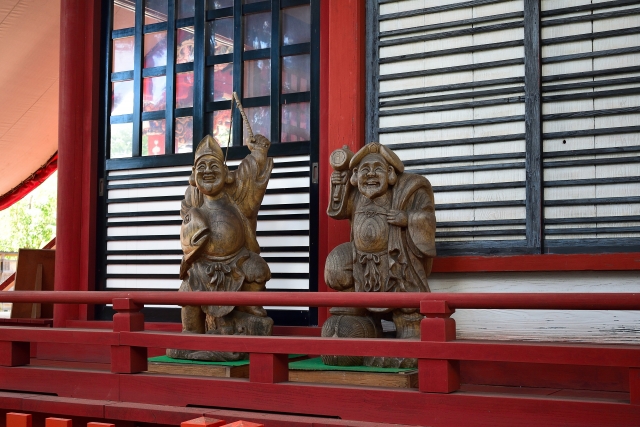
When visiting Omae Shrine and Omae Ebisu Shrine, the official order of worship is to first visit Omae Shrine, the head shrine, and then Omae Ebisu Shrine. Both shrines are said to offer many benefits, so please visit both shrines with your heart and soul in the manner appropriate to each.
Worship Etiquette and Manners
Upon entering the shrine precincts, please visit the main shrine “Omae Shrine” first, and then visit Nippon Ichi-Ebisu-sama. This is the official order of visitation.
After purifying your hands and mouth at the water fountain, you should enter the shrine and worship with the two-beat, one-beat, one-prayer manner. Please keep quiet and be considerate of other worshippers on the grounds.
In particular, Omae Ebisu Shrine’s Ebisu-sama, the largest Ebisu Shrine in Japan, attracts many visitors, so be careful not to disturb others when taking pictures. Also, use cell phones sparingly in the shrine precincts and respect the sacred atmosphere.
Annual and Seasonal Events
Various festivals are held throughout the year, including the New Year’s Day Festival and New Year’s Special Prayer Service (January 1), Ebisu-ko Festival (January 10 and December 10), Setsubun Festival and Tsuina Ceremony (February 3), National Foundation Day Celebration (February 11), and Prayer Festival (March 28), where Kagura music is dedicated.
In spring, the Ikenobo Utsunomiya branch of the Iemoto Ikebana flower arrangement school holds a flower offering ceremony (May 1) and a children’s flower arrangement workshop (May 3), offering a chance to enjoy cultural events.
From summer to autumn, the Natsukoshi Matsuri (July 31), Tanabata Matsuri (August 7), Regular Festival (November 9 and 10), and Shinnamesai (November 27) are held. Especially at the Regular Festival, a kagura performance consisting of the Daikoku Ebisu Dance, Amagusu White Fox Dance, and Ten no Iwato Dance is dedicated.
At the end of the year, a fireless theft prevention prayer service (December 1), Tencho Festival (December 23), and a yoshimatsuri/purification ceremony (December 31) are held to conclude the year.
Red Seal, Good Luck Charms, and Money Ornaments
The “lucky charm” is a good luck charm with a design of “Daikoku-sama” and “Ebisu-sama,” the deities of the shrine. It is said that a worshipper who received this amulet was blessed with the fortune of winning the lottery. It is famous as a popular good luck charm with many inquiries from all over Japan.
Red seals are available at both Omae Shrine and Omae Ebisu Shrine, and both shrines’ red seals can be obtained together. Limited edition red seals are sometimes awarded at special times of the year, so it is recommended to check the details in advance.
Various prayers are also available, including those for the first shrine visit, Shichi-Go-San, family safety, traffic safety, business prosperity, company prosperity, exorcism, directional movement, good marriage, physical health, success in school, good luck, easy delivery, healing of illness, gratitude to the gods, and burning at the shrine.
Access & Information
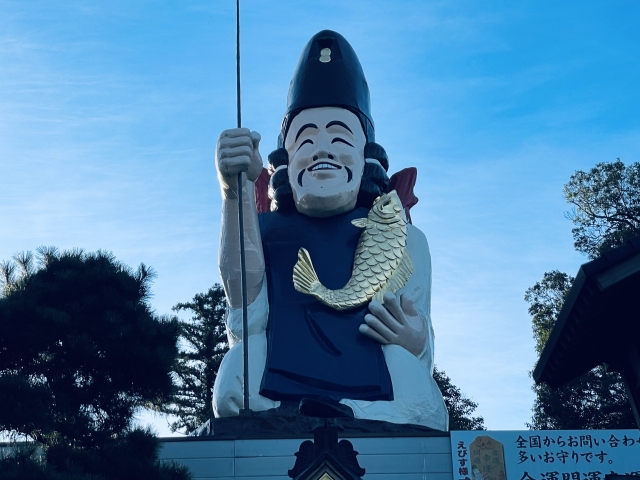
Omae Shrine and Omae Ebisu Shrine are located in the rich natural environment of Moka City, Tochigi Prefecture. When using public transportation, the Moka Railway and buses can be utilized.
Transportation Access
Access by car
The most convenient route is about 15 minutes from the Moka IC of the Kita-Kanto Expressway. After exiting the Moka IC, take National Route 408 (Kinu Techno Dori) toward Moka, Mashiko, and Ninomiya, and reach the hotel via Prefectural Route 47.
Access by train
It takes about 15 minutes on foot from Kita-Mooka Station on the Mooka Railway Mooka Line. It takes about 50 minutes by car from JR Utsunomiya Station.
Hours of Worship, Fees, and Parking Information
Hours of visitation
The basic hours of worship are from 8:30 a.m. to 5:00 p.m.
Fees】 【Visiting Fees】: Free of charge
Free of charge. However, there may be an additional fee for special visits and prayer services.
Parking】 【Parking Lot】.
There are 200 parking spaces available free of charge for visitors. We recommend that you arrive early during busy periods such as Hatsumode (New Year’s visit) and regular festivals.
Regular holidays
You can visit the shrine without a day off.
<Address: 937 Togo, Moka-shi, Tochigi 321-4304
For more detailed information and the latest status, we recommend that you check the official website in advance.
Reference Site
Omae Shrine Official Website: https://oosakijinja.com/
Omae Ebisu Shrine Official Website: https://ebisujinja.com/


